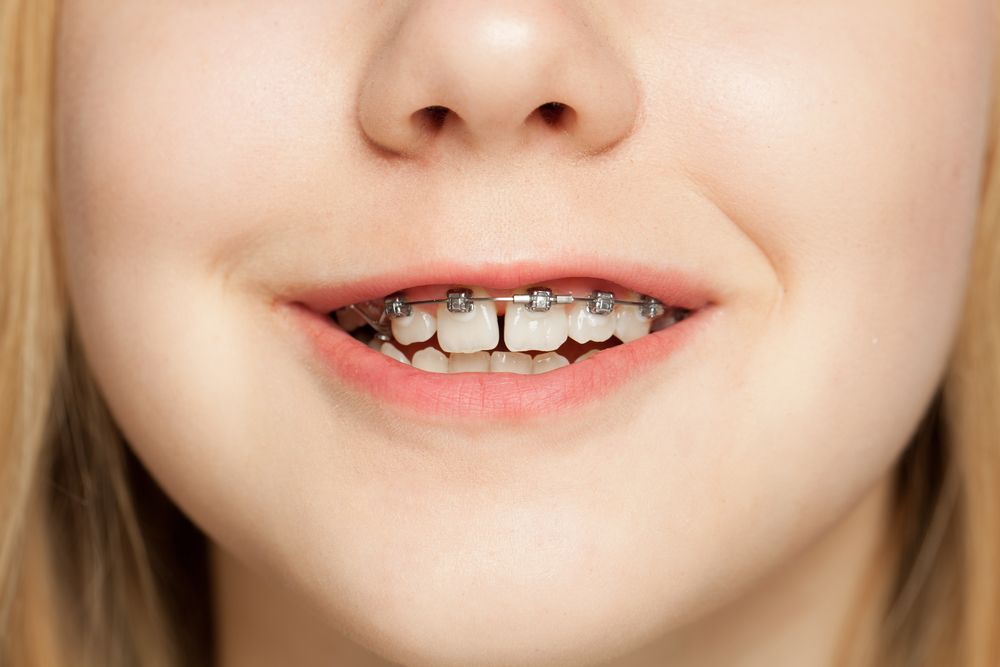
“How can I tell if my child needs braces?”
This is a great question that all parents of young children should have answered. Board-certified orthodontist Dr. Wint W. Tun at Harmony Orthodontics in Tomball, TX, will provide you with a lengthy but thorough answer in today’s blog, so read on. If you have additional questions or want to schedule a no-cost, no-obligation braces consultation with Dr. Tun after reading this blog, give us a call at 832-699-3683.
When to See the Orthodontist for a Braces Consultation
All children should have an ortho consult by the age of seven, according to the American Orthodontists Association (AAO). However, if your kiddo is over 7, bring him in any way! It’s never too late to improve dental alignment for more comfortable oral function and to create ample space for teeth to develop.
On the flip side, if your little one seems to have an orthodontic problem before age 7, Dr. Tun will be happy to evaluate his dentition. A consultation will provide you with all the info you need to make wise choices about your child’s orthodontic care.
The AAO also provides parents with excellent tips on determining whether a child needs braces. Dr. Tun will share those tips here, along with additional explanations to help you understand the symptoms of needing braces.
Losing Baby Teeth Early or Late
A child’s bottom and top center teeth, called incisors, usually fall out naturally between the ages of six and eight. On either side of these four incisors are the canines, or cuspids. The canines and first molars usually fall out between ages nine and 12. Around age 10 to 12, the last teeth left, the second molars, fall out. If your child’s teeth fall out more than a year before or after these age ranges, he might need braces.
Trouble Biting and/or Chewing Foods
At any age, if a child’s teeth hurt when he bites and chews, he may need braces. The pain referenced here is not “teething” – the expected discomfort that occurs when primary and permanent teeth erupt from the gums. Instead, this pain only happens while the child eats and may be felt in one or more existing teeth.
Breathing Through the Mouth: Mouth Breathing
Mouth breathing is the term we give to the condition that causes a person the inability breathe normally through the nose. These people breathe only through the mouth. This is different from when a child has a stuffy nose associated with a cold, flu, allergies, or sinus irritation. Mouth breathing is constant. In addition to causing sleep disorders, mouth breathing can alter the proper development of the face and jaws. Braces can help reshape the face and prevent mouth breathing.
Sounds from the Jaw
If your child’s jaw joint(s) pops, clicks, or cracks when he chews, talks, or yawns, he may need braces. When one or both jaw joints aren’t properly aligned, a person can develop TMJ disorder, which causes many issues, including pain ranging from mild to severe.
Constantly Biting His Cheeks
Some people chew on the inside of their cheeks due to stress or anxiety, which is not indicative of needing orthodontics. Others accidentally bite their cheeks repeatedly when eating and speaking. This symptom can indicate a crossbite or other orthodontic condition that requires treatment with braces.
Facial Unsymmetry or Imbalance
The appearance of our cheeks, lips, and chin has much to do with the underlying structure provided by jaws and teeth. If your child’s face seems imbalanced, his occlusion may need correction. We call this condition malocclusion, and braces can treat it. Occlusion is defined as the relationship between the upper and lower teeth when the mouth is closed. Malocclusion can cause many issues, ranging from tooth wear and breakage to TMJ disorder.
An Image Says It All
This PDF, provided by the AAO, shows parents what different types of orthodontic issues look like. Compare your child’s mouth to these images, and if you notice similarities, give us a call. Your child may need braces as early as age six or seven. At this age, we use early orthodontics to direct proper development of the jaws and teeth, to reduce the potential for more complex issues later in life.
No-Cost, No-Obligation Braces Consultation
If you notice any of the symptoms described above or your child’s smile appears to have similarities to the images in the AAO’s pdf file, call Harmony Orthodontics today to schedule a visit. Dr. Tun’s no-cost, no-obligation consultation includes X-rays and a sit-down meeting so that she can show you her findings and explain whether your child needs braces. Give us a ring at 832-699-3683.